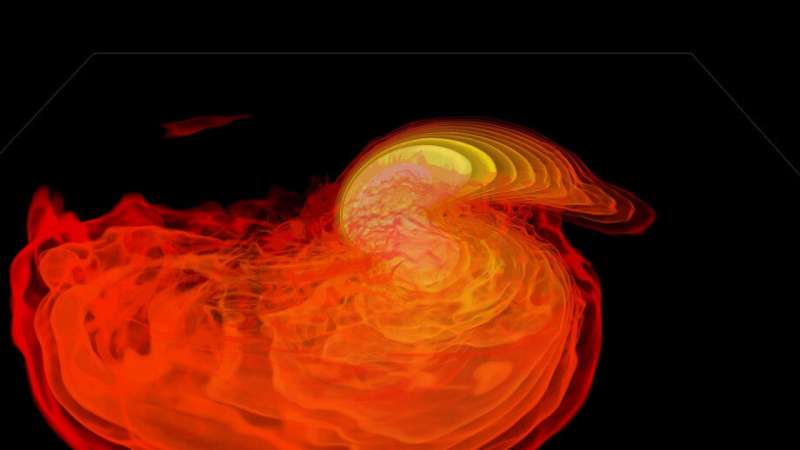New infrared telescope to spot cosmic hidden treasures

A new infrared telescope, to be designed and built by astronomers at the Australian National University (ANU), will monitor the entire southern sky in search of new cosmic events as they take place.
DREAMS—the Dynamic REd All-Sky Monitoring Survey—will be located at the historic Siding Spring Observatory in northern New South Wales.
The telescope will be used by researchers all over the globe and propel Australia to the forefront of the emerging field of transient astronomy—the study of cosmic events almost in 'real time'.
Lead researcher Professor Anna Moore, Director of the ANU Institute for Space (InSpace), said a transient survey of the southern sky in the infrared had never been done and would help find many hidden treasures in the universe.
"DREAMS will allow us to 'see' the universe in an entirely new way," Professor Moore said.
"Infrared telescopes can study dusty and distant regions of space that are impenetrable to optical telescopes, unveiling new stars, nebulae, mergers, galaxies, supernovae, quasars and other sources of radiation new to science.
"By monitoring the sky continuously and rapidly, we will be able to search for varying and explosive phenomena. This 'real-time' astronomy, which allows us to study events taking place over months, weeks or days instead of millions of years, is a window into the great unknown.
"DREAMS will give us a fresh take on many aspects of the universe."
DREAMS consists of a fully automated 0.5m telescope and infrared camera. In each snapshot, DREAMS "sees" 3.75 square degrees (20 times the Moon's size) and will be able to map the entire southern sky in three clear nights. The telescope is 10 times more powerful than its nearest competitors.
The data captured by DREAMS will help detect the source of gravitational waves, and the collision of neutron stars and black holes.
"DREAMS will enable multi-messenger astronomy—the discovery of new events by observing the sky using different wavelengths of light," lead research partner Assistant Mansi Kasliwal, from the California Institute of Technology (Caltech), said.
"By doing so it aspires to pinpoint elusive gravitational wave events.
"Neutron star black hole mergers are especially exciting as they create heavy elements that shine in the infrared."
According to Dr. Tony Travoillan, a co-investigator and lead technical manager on the project, DREAMS is innovative and economical.
"Surveying the sky in the infrared has always been limited by the cost of the cameras and not the telescope," Dr. Travouillon, who is based at the ANU Research School of Astrophysics and Astronomy, said.
"The development of infrared cameras using Indium Gallium Arsenide technology, with the help of our collaborators at MIT, has given astronomers an economical alternative that we are the first to implement on a wide field survey.
"We are using six of these cameras on our telescope. It gives us a scalable design that minimises instrument complexity and cost."
The telescope will be completed in early 2021, with operations beginning soon after. Co-investigator Professor Orsola DeMarco, from Macquarie University, will use simulations to explain coalescing, or merging, stars captured by DREAM.
"I hope the telescope will see merging stars so dusty that they shine brightly in the infrared," she said.
Provided by Australian National University


















